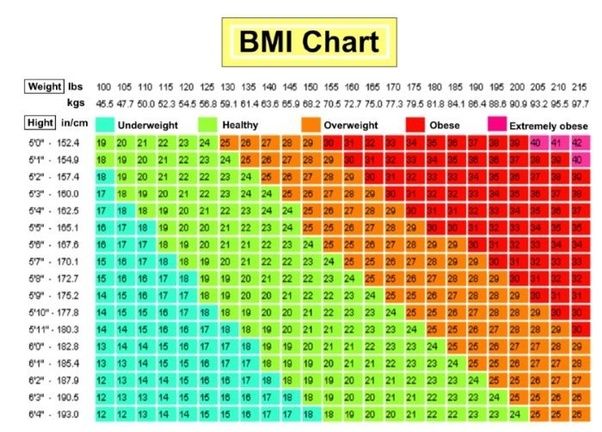What is obese for a 14 year old? A BMI between 25 to 29.9 is considered overweight. Anything over 30 is considered obese. Normal BMI is between 18.5 and 24.9.
Then, How can u tell if ur fat? A BMI number is designed to give you an idea of how much body fat you have as a ratio of your weight to height. It’s measured by taking your weight in kilograms and dividing it by your height in meters squared. A reading at or over 30 means you’re obese. A reading at or over 40 is severe obesity.
in the same way, How tall should I be at 14? What is the average height for a 14 year old? The average height for a 14-year-old boy is 162.4 cm (5 ft 3), while for girls, it is 159.8 cm (5 ft 2). Expect a significant variation in height at this age. However, some people will have finished puberty, while some may not have started yet.
What considered fat? If your BMI is 18.5 to <25, it falls within the healthy weight range. If your BMI is 25.0 to <30, it falls within the overweight range. If your BMI is 30.0 or higher, it falls within the obesity range.
How fast can a teenager lose weight? In general, most teens can aim to lose 1 to 2 lb (0.45 to 0.91 kg) per week, which will quickly add up over the weeks and months. Set yourself a small goal to lose between 5 to 10 lb (2.3 to 4.5 kg) in your first month.
Is it better to be fat or skinny?
I have always believed that a good, healthy body can come in many shapes and sizes.” Fat, fit people tend to be better off healthwise than thin people who are unfit, Gaesser said, suggesting that being fit is far more important than being thin.
How skinny will I get if I stop eating?
“On a day you don’t eat for 24 hours, you’re guaranteed to be losing a third or half a pound of non-water weight that’s mostly from body fat,” Pilon told Global News.
Why is my face fat but I’m skinny?
Often, extra fat in your face is the result of excess body fat. Losing weight can contribute to fat loss and help slim down your body and face. Cardio, or aerobic exercise, is any type of physical activity that increases your heart rate.
What is the average height for a 14 year old?
What is the average height for a 14 year old? The average height for a 14-year-old boy is 162.4 cm (5 ft 3), while for girls, it is 159.8 cm (5 ft 2). Expect a significant variation in height at this age. However, some people will have finished puberty, while some may not have started yet.
How do I know if I’m overweight?
Adult Body Mass Index
- If your BMI is less than 18.5, it falls within the underweight range.
- If your BMI is 18.5 to <25, it falls within the healthy weight range.
- If your BMI is 25.0 to <30, it falls within the overweight range.
- If your BMI is 30.0 or higher, it falls within the obesity range.
What is tall for a 14 year old female?
Height by age
| Age (years) | 50th percentile height for girls (inches and centimeters) |
|---|---|
| 12 | 59.4 in. (151 cm) |
| 13 | 61.8 in. (157 cm) |
| 14 | 63.2 in. (160.5 cm) |
| 15 | 63.8 in. (162 cm) |
How tall are models at 14?
Girls aged 14-15 are expected to be between 5’7″ – 6’0″. Those aged between 16-22 need to be around 5’9″ – 6’0″. Height is favoured by the high fashion modelling world; the above are typical measurements expected of teens wishing to make it in this type of modelling.
Do girls grow after period?
Girls may grow between two and three inches per year until menstruation occurs, which marks the end of this rapid height growth. 2. Breasts start to develop. This can be a slow process, beginning with small breast buds and darkened areolas, and advancing, eventually, to larger breast growth and protruding nipples.
Can you lose weight by not eating?
Fasting for a certain number of hours each day or eating just one meal a couple days a week, can help your body burn fat. And scientific evidence points to some health benefits, as well.
How do you lose face fat?
How to Lose Face Fat: 8 Effective Tips
- Do facial exercises. Facial exercises can be used to improve facial appearance, combat aging, and improve muscle strength ( 1 ).
- Add cardio to your routine.
- Drink more water.
- Limit alcohol consumption.
- Cut back on refined carbs.
- Get enough sleep.
- Watch your sodium intake.
- Eat more fiber.






